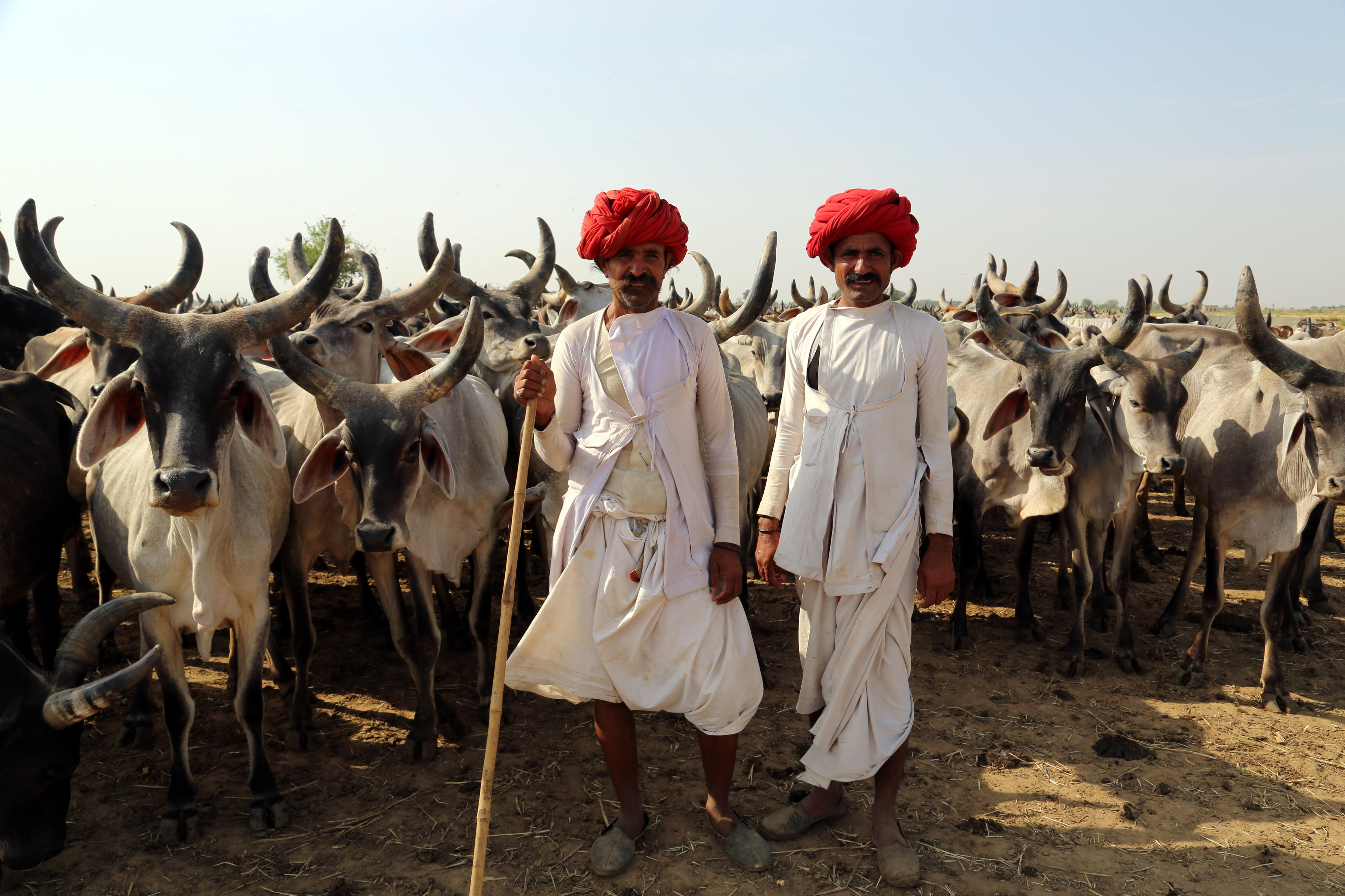With scarce and erratic rainfall, and frequent droughts in the region, a pastoralist community of Rajasthan, Raikas follow the practice of moving their flocks and herds in search of water and forage.
Copyright© Himanshu Malhotra/ICARDA, via flickr, CC BY-NC-ND 2.0
Climate and the environment Natural resources under pressure
The air quality in many of the country’s conurbations is very poor. Its waterways are heavily polluted, and in many parts of the country there are no proper systems of waste or wastewater management. 40 per cent of India's forests are degraded, and the groundwater table is falling dramatically.
A government target stipulates that one third of the country’s surface area is to be covered by forests. For ecologically vulnerable regions, the target is two thirds. However, according to the 2021 Forest Report, actual coverage is only around 22 per cent. And, of that area, only about 12 per cent is actually covered by moderately dense or very dense forest.
Climate change
Increasing soil degradation and the considerable impact of climate change on other natural resources has the potential to cause conflict. According to government figures, more than half of India’s land area is affected by soil degradation and desertification. In 2022, more than 2.5 million people were displaced by natural disasters, according to research by the British organisation Global Change Data Lab.
Furthermore, existing climate models for global climate change predict strong fluctuations in temperatures and changed monsoon patterns on the Indian subcontinent. This will mean that droughts, extreme heat, flooding and hurricanes will be even more frequent in the future, and this will lead to an increase in conflicts over water and land as resources that are in short supply.
Although India does have modern environmental legislation, the enforcement of these laws is often hampered by a lack of technical competence at the local level, clearly defined responsibilities and financial resources. “Greening” India’s growth will be crucial for the country’s sustainable development and for the global climate as well.
Setting itself ambitious climate targets
At the international climate conference in Glasgow in late 2021, India’s Prime Minister Narendra Modi announced his country’s new, ambitious climate targets:
- Reaching net zero emissions by 2070
- Taking non-fossil energy capacity to 500 gigawatts by 2030
- Meeting 50 per cent of energy requirements from renewable sources by 2030
- Reducing the carbon intensity of the economy (CO₂ emissions relative to gross domestic product) by 45 per cent by 2030 compared with 2005
By setting these targets for itself, India has enhanced its Nationally Determined Contributions (NDCs). In 2022, the country submitted its first decarbonisation strategy to the Secretariat of the United Nations Framework Convention on Climate Change (UNFCCC). With assistance from the International Energy Agency (IEA), the government is drafting its first roadmap for reaching net zero emissions by 2070.
However, where differing political aims come into conflict – for example, the use of coal versus climate action – the government frequently favours short-term economic growth and security of supply, particularly for the growing middle class.
As at: 03/09/2024
